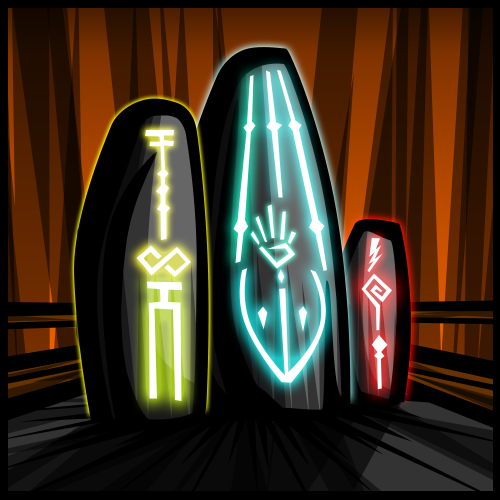When we’re depicting cultures in Illyriad, there is a tension between the need to make each seem coherent and consistent with itself, and also the need to allow for a variety of interpretation. That all sounds a bit obscure, so let me explain.

Players in Illyriad can pick any one of several races. In all of these cases, players might be coming to them with a range of expectations. For the Dwarves, Tolkien’s Dwarves are the obvious reference, but they might also be thinking of the Dwarves of Norse myth, or the Mostali of RuneQuest, or the insular Dwarves of Dragon Age. For Elves, they might be thinking of the superior and distant Elves of the Lord of the Rings movies, or they might be thinking of the spindly wood elves in illustrated editions of The Hobbit, or they might think of the dangerous and otherworldly creatures who kidnapped Tamlane in the legend. And so on.
The challenge in each case is to allow players to bring their own preconceptions into the world of Illyriad, while maintaining a sense of continuity and coherence.
This is easiest to do with the written Faction descriptions. So, if we are looking at Orcs, then people always assume mindless violence – but as Illyriad is about building cities and kingdoms, this begs the question of how Orcs might run a society. Simply, we don’t have to answer that question – we can propose different options, one per faction, and the players can gravitate towards, focus on, whichever suits their sense of what is Orc-ish. So, we have the ritualized violence of the Blood Reavers, the desperate attempts of the Pax Orcana to adopt ‘civilized’ habits, the measured confrontations of the Crimson Skulls… all offering a different view, a different treatment, of the same subject.
When we create art for the different races, however, there is a different challenge. The example of our Elves, above, demonstrates this. Here we have to bring together wisdom and compassion, with cruelty; the superiority of the “high” elf, with the roughness of the woodland dweller; the sexual fantasy view, with a more realistic depiction. There are a lot of different views of ‘what Elves are like’ coming together here, and the challenge has been to bring them into a single, visually coherent depiction.











